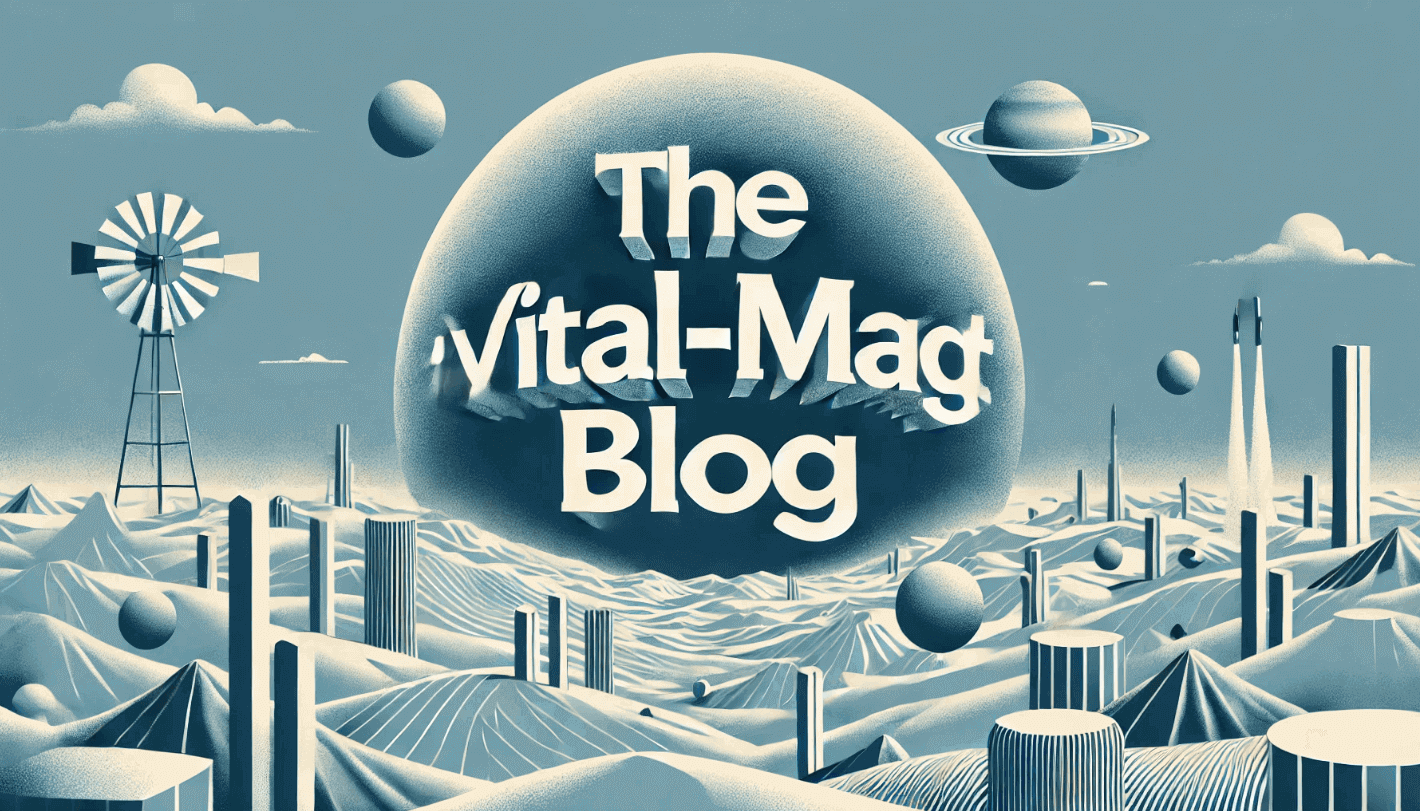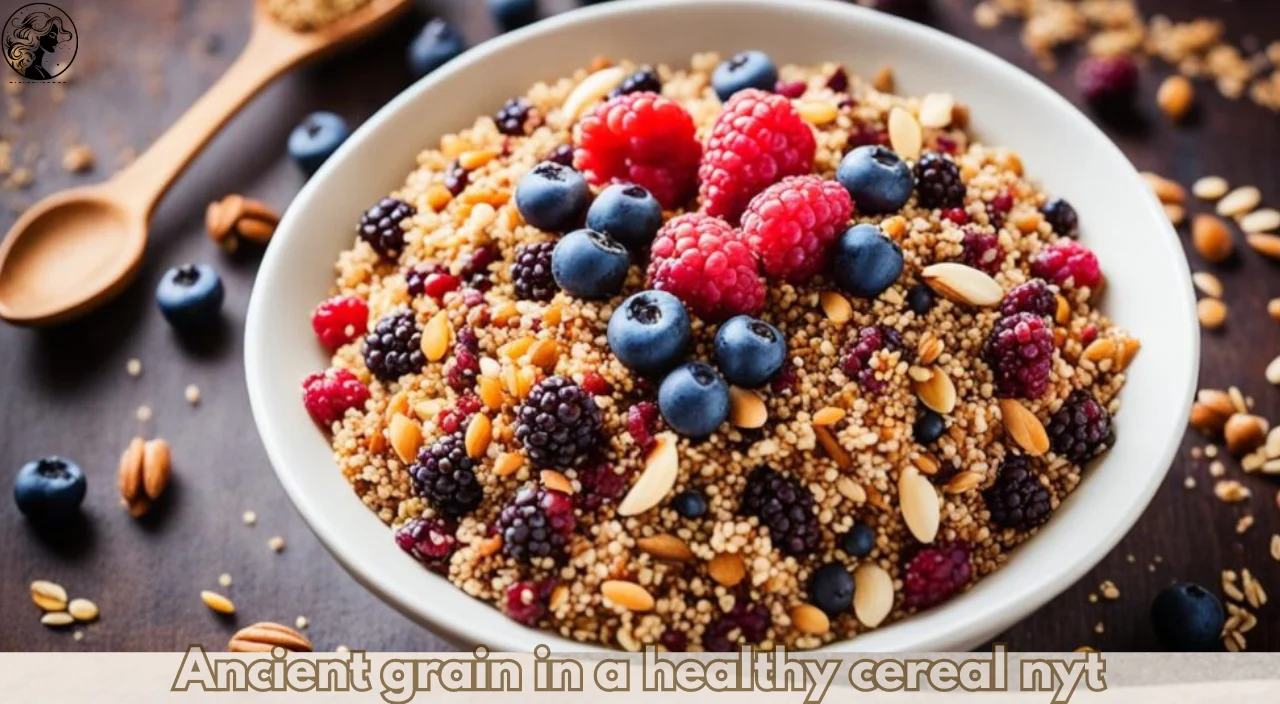HEALTH
The Allure of the Egg: A Culinary and Cultural Journey
Published
10 months agoon
By
Roman Seo
Eggs are a staple in many diets around the world, beloved for their versatility, rich flavor, and nutritional benefits. From breakfast classics to sophisticated dishes, eggs have found their place in countless recipes and cultural traditions. This article explores the fascinating world of eggs, delving into their history, varieties, culinary uses, and the science behind their nutritional value.
A Brief History of Eggs
Eggs have been consumed by humans for thousands of years. Archaeological evidence suggests that early civilizations, such as those in ancient China and Egypt, recognized the egg’s nutritional value. The domestication of chickens for egg production began around 8000 years ago, and from then on, eggs became a cornerstone of human diets.
In medieval Europe, eggs were highly prized and often featured in lavish feasts. They were also used as a form of currency and as a symbol of fertility and rebirth, particularly during spring festivals and Easter celebrations.
Types of Eggs
While chicken eggs are the most common and widely recognized, various types of eggs are enjoyed around the world:
- Chicken Eggs: The most ubiquitous, available in a range of sizes and colors (brown and white), and used in countless recipes.
- Duck Eggs: Larger and richer than chicken eggs, with a slightly stronger flavor. They’re favored in baking and certain cuisines.
- Quail Eggs: Small and delicate, with a speckled shell. They are often used as a garnish or in gourmet dishes.
- Goose Eggs: Bigger and with a richer flavor, but less commonly found due to the size and rarity.
- Ostrich Eggs: Enormous and rare, these eggs are a novelty and are often used for large gatherings or special occasions.
Nutritional Benefits
Eggs are a nutritional powerhouse. They are a great source of high-quality protein, containing all nine essential amino acids necessary for human health. They also provide important vitamins and minerals, including:
- Vitamin A: Essential for vision and immune function.
- Vitamin D: Supports bone health and immune function.
- Vitamin B12: Crucial for nerve function and the production of red blood cells.
- Choline: Important for brain health and liver function.
- Selenium: An antioxidant that protects cells from damage.
Despite concerns over cholesterol, research indicates that for most people, eating eggs in moderation does not significantly impact blood cholesterol levels or heart disease risk.
Culinary Uses
Eggs are incredibly versatile in the kitchen. Here’s a glimpse into how they can be used:
- Breakfast: Classic dishes like scrambled eggs, omelets, and poached eggs are breakfast staples. Eggs can be prepared in numerous ways, from soft-boiled to sunny-side up.
- Baking: Eggs act as binders, leavening agents, and moisture providers in baked goods. They are essential in recipes for cakes, cookies, and pastries.
- Cooking: Eggs are used in savory dishes like quiches, frittatas, and custards. They add richness and texture to sauces and soups.
- Preservation: Techniques like pickling or making salted eggs have been used for centuries to preserve eggs and add unique flavors.
Cultural Significance
Eggs hold special significance in many cultures. For instance:
- Chinese Cuisine: Century eggs (preserved eggs) are a delicacy in China, known for their distinctive flavor and appearance.
- Japanese Cuisine: Tamago sushi (sweet omelet sushi) and ramen often feature eggs as key ingredients.
- Eastern European Traditions: Eggs are integral to Easter celebrations, symbolizing new life and rebirth. Decorative eggs, such as the intricately painted Ukrainian Pysanky, are celebrated art forms.
Conclusion
The humble egg is much more than just a breakfast item; it is a symbol of nourishment, creativity, and cultural heritage. Its adaptability in cooking and its rich nutritional profile make it a cherished ingredient across the globe. Whether enjoyed in a simple scramble or as part of a complex recipe, the egg continues to be an essential and beloved component of our diets.
FAQs on Eggs
1. What is the nutritional value of an egg?
An average large egg (about 50 grams) contains approximately:
- Calories: 70
- Protein: 6 grams
- Fat: 5 grams (of which 1.5 grams are saturated fat)
- Cholesterol: 185 milligrams
- Vitamin A: 6% of the Daily Value (DV)
- Vitamin D: 10% of the DV
- Vitamin B12: 20% of the DV
- Choline: 147 milligrams
- Selenium: 22% of the DV
Eggs are also a source of antioxidants like lutein and zeaxanthin, which are beneficial for eye health.
2. How can I store eggs properly?
To keep eggs fresh:
- Refrigerate: Store eggs in their original carton in the refrigerator. This helps prevent them from absorbing strong odors and flavors from other foods.
- Temperature: Keep eggs at a consistent temperature below 40°F (4°C). Avoid storing them in the door of the refrigerator, as the temperature there can fluctuate.
- Freshness Check: To check an egg’s freshness, place it in a bowl of water. Fresh eggs will sink and lay flat, while older eggs will stand upright or float.
3. How long can I keep eggs before they go bad?
Eggs can generally be kept for up to 3-5 weeks in the refrigerator. However, they are best used before the “sell by” or “expiration” date on the carton. For best quality, use eggs within 2 weeks of purchase.
4. What is the difference between brown and white eggs?
The color of the eggshell is determined by the breed of the chicken. Brown eggs come from chickens with red feathers and earlobes, while white eggs come from chickens with white feathers and earlobes. Nutritionally and taste-wise, there is no significant difference between brown and white eggs. The choice often comes down to personal preference or local availability.
5. Are there any health concerns with eating eggs?
Eggs are safe for most people when eaten in moderation. Concerns about cholesterol have been alleviated by recent research showing that eggs have a minimal impact on blood cholesterol levels for most people. However, those with specific health conditions, such as diabetes or heart disease, should consult with a healthcare provider to determine their ideal egg consumption.
6. How can I tell if an egg is cooked or raw?
To distinguish between a cooked and raw egg:
- Spin Test: Place the egg on a flat surface and spin it. A cooked egg will spin smoothly and steadily, while a raw egg will wobble because the liquid inside shifts around.
7. What are some common ways to cook eggs?
Eggs can be prepared in various ways, including:
- Scrambled: Beaten and cooked in a pan with butter or oil.
- Fried: Cooked in a pan with oil or butter, with the yolk either left intact or broken.
- Poached: Cooked gently in simmering water without the shell.
- Boiled: Cooked in the shell in boiling water, resulting in soft, medium, or hard-boiled eggs depending on the cooking time.
- Baked: Cooked in an oven, often used for dishes like quiches and frittatas.
8. What are “cage-free” and “free-range” eggs?
- Cage-Free: Chickens are not kept in small cages but are instead allowed to roam freely inside a barn or poultry house. They generally have more space than caged chickens but may still be confined indoors.
- Free-Range: Chickens have access to the outdoors in addition to indoor space. They can roam and forage outside, which is thought to lead to better living conditions and possibly better egg quality.
9. Can I eat eggs that have been left out at room temperature?
It’s generally not safe to eat eggs that have been left out at room temperature for more than 2 hours, as bacteria can grow rapidly. Always refrigerate eggs promptly to maintain safety.
10. What are some popular egg-based dishes?
Some well-loved egg-based dishes include:
- Omelets: Beaten eggs cooked with various fillings like cheese, vegetables, and meats.
- Eggs Benedict: Poached eggs on English muffins with ham and hollandaise sauce.
- Quiche: A savory pie with a filling made from eggs, cream, and other ingredients.
- Egg Salad: Chopped hard-boiled eggs mixed with mayonnaise, mustard, and seasonings.
- Shakshuka: Poached eggs in a spicy tomato sauce, often served with bread.
11. What should I do if I crack an egg and find it smells bad?
If an egg has an off smell when cracked open, discard it immediately. A bad odor is a sign that the egg is spoiled and could pose a health risk.
12. Are there any alternatives to eggs for baking?
Yes, there are several egg substitutes for baking, including:
- Applesauce: Use ¼ cup of unsweetened applesauce per egg.
- Mashed Banana: Use ¼ cup of mashed banana per egg.
- Greek Yogurt: Use ¼ cup of Greek yogurt per egg.
- Commercial Egg Replacers: Products specifically designed to replace eggs in recipes, such as those made from starches and leavening agents.
You may like
HEALTH
The Complete Guide to OCMSo Georgia: Enhancing Healthcare Across the State
Published
9 months agoon
September 7, 2024By
Roman Seo
In the evolving landscape of healthcare, the need for efficient, effective, and equitable solutions is paramount. Georgia, like many other states, has been striving to improve its healthcare systems to ensure better access and outcomes for all residents. At the forefront of this effort is the Office of Community Medical Services and Outreach, better known as OCMSo Georgia. This comprehensive guide will delve into “The Complete Guide to OCMSo Georgia: Enhancing Healthcare Across the State,” offering insights into how this initiative is shaping the future of healthcare in Georgia.
The Importance of OCMSo Georgia in Modern Healthcare
Healthcare is a cornerstone of any society, and in Georgia, the challenges of delivering quality care to a diverse population are immense. OCMSo Georgia has emerged as a key player in addressing these challenges. By focusing on community-based medical services and outreach programs, OCMSo Georgia is not only enhancing healthcare delivery but also making it more accessible to those in rural and underserved areas.
Understanding the Mission of OCMSo Georgia
At its core, OCMSo Georgia aims to bridge the gap between healthcare providers and communities. This initiative is about more than just offering medical services; it’s about fostering a relationship between healthcare providers and the communities they serve. The mission is to ensure that every resident of Georgia has access to the care they need, regardless of their location or socioeconomic status.
The Role of Community Medical Services in Georgia
Community medical services are essential in providing localized care that is tailored to the specific needs of a community. OCMSo Georgia has developed a range of programs designed to meet these needs. Whether it’s through mobile clinics, telehealth services, or local health fairs, the focus is always on bringing care to the people, rather than making them travel long distances to receive it.
OCMSo Georgia’s Impact on Rural Healthcare
Rural areas in Georgia have historically faced significant healthcare disparities. With fewer hospitals and healthcare providers, residents in these areas often struggle to access timely and adequate care. OCMSo Georgia is working to change this by expanding its outreach efforts to ensure that even the most remote communities have access to essential healthcare services.
Innovative Programs Under OCMSo Georgia
One of the standout features of OCMSo Georgia is its commitment to innovation. The organization is constantly exploring new ways to deliver care more effectively. From integrating cutting-edge technology into their services to developing new models of care delivery, OCMSo Georgia is at the forefront of healthcare innovation in the state.
Telehealth: A Game Changer for Georgia’s Healthcare System
Telehealth has become a vital tool in modern healthcare, and OCMSo Georgia has been quick to embrace this technology. By offering telehealth services, OCMSo Georgia has made it easier for residents to access care, particularly in areas where healthcare providers are scarce. This approach not only improves access but also reduces the strain on physical healthcare facilities.
Collaborative Efforts: Partnering for Better Health Outcomes
OCMSo Georgia understands that improving healthcare is not a task that can be accomplished in isolation. The organization has formed partnerships with various stakeholders, including local governments, healthcare providers, and community organizations. These collaborations are crucial in ensuring that the programs offered by OCMSo Georgia are both effective and sustainable.
Training and Education: Empowering Healthcare Providers
A critical aspect of OCMSo Georgia’s mission is the training and education of healthcare providers. By offering ongoing training and professional development opportunities, OCMSo Georgia ensures that healthcare providers are equipped with the latest knowledge and skills. This not only improves the quality of care but also helps in retaining healthcare professionals in the state.
Addressing Healthcare Disparities with OCMSo Georgia
Healthcare disparities are a significant issue in Georgia, particularly among minority and low-income populations. OCMSo Georgia is actively working to address these disparities through targeted outreach programs. These programs are designed to ensure that vulnerable populations have access to the care they need, thus improving overall health outcomes.
The Future of Healthcare in Georgia with OCMSo Georgia
As OCMSo Georgia continues to grow and expand its services, the future of healthcare in the state looks promising. The organization’s commitment to innovation, collaboration, and community engagement is setting a new standard for healthcare delivery. With continued support and investment, OCMSo Georgia is poised to make a lasting impact on the health and well-being of all Georgians.
OCMSo Georgia’s Mobile Clinics: Bringing Healthcare to Your Doorstep
One of the most significant challenges in healthcare is ensuring that people have access to services when and where they need them. OCMSo Georgia’s mobile clinics are a groundbreaking solution to this problem. These clinics travel to various locations across the state, offering a range of services, including preventive care, screenings, and vaccinations.
Enhancing Mental Health Services through OCMSo Georgia
Mental health is a critical component of overall health, yet it is often overlooked. OCMSo Georgia has made mental health services a priority, integrating them into their community outreach programs. By offering mental health screenings, counseling, and support services, OCMSo Georgia is addressing a vital need in the community.
OCMSo Georgia’s Role in Pandemic Preparedness and Response
The COVID-19 pandemic highlighted the importance of having a robust healthcare infrastructure. OCMSo Georgia played a pivotal role in the state’s pandemic response, providing critical services such as testing, vaccination, and public education. The lessons learned during the pandemic have strengthened OCMSo Georgia’s ability to respond to future public health emergencies.
The Economic Impact of OCMSo Georgia’s Initiatives
Improving healthcare is not just about better health outcomes; it’s also about economic benefits. By enhancing healthcare access and quality, OCMSo Georgia is helping to reduce healthcare costs, improve productivity, and stimulate economic growth in the state. The organization’s initiatives are creating a healthier workforce and reducing the financial burden on the healthcare system.
Community Engagement: Building Trust and Improving Health
Trust is a crucial element in healthcare, and OCMSo Georgia places a strong emphasis on building trust within the communities it serves. Through consistent engagement, transparent communication, and a focus on cultural competency, OCMSo Georgia is fostering stronger relationships between healthcare providers and the communities they serve.
OCMSo Georgia’s Efforts in Reducing Chronic Disease Prevalence
Chronic diseases, such as diabetes and heart disease, are prevalent in Georgia and contribute significantly to healthcare costs and morbidity. OCMSo Georgia has implemented targeted programs aimed at reducing the prevalence of these conditions through education, preventive care, and early intervention.
Supporting Maternal and Child Health with OCMSo Georgia
Maternal and child health is a priority for OCMSo Georgia. The organization offers a range of services designed to support pregnant women, new mothers, and young children. These services include prenatal care, breastfeeding support, and immunization programs, all of which are crucial for ensuring the health of the next generation.
OCMSo Georgia’s Contribution to Reducing Infant Mortality Rates
Infant mortality is a critical issue in Georgia, with rates higher than the national average. OCMSo Georgia is working to address this by providing comprehensive maternal and infant care services, particularly in underserved areas. These efforts are making a significant impact in reducing infant mortality rates across the state.
Addressing Substance Abuse: OCMSo Georgia’s Comprehensive Approach
Substance abuse is a significant public health issue in Georgia. OCMSo Georgia has developed a comprehensive approach to addressing this issue, which includes prevention programs, treatment services, and community support initiatives. By tackling substance abuse from multiple angles, OCMSo Georgia is helping to reduce its impact on communities across the state.
OCMSo Georgia and the Fight Against HIV/AIDS
HIV/AIDS remains a major public health challenge in Georgia. OCMSo Georgia is at the forefront of efforts to combat this disease through education, testing, and treatment services. The organization’s outreach programs are particularly focused on high-risk populations, ensuring that they have access to the care and support they need.
The Role of Data and Research in OCMSo Georgia’s Success
Data and research are critical components of OCMSo Georgia’s strategy. The organization uses data to inform its programs, track progress, and make evidence-based decisions. By continually analyzing data and conducting research, OCMSo Georgia ensures that its initiatives are both effective and responsive to the needs of the community.
OCMSo Georgia’s Vision for the Future
Looking ahead, OCMSo Georgia has a clear vision for the future of healthcare in the state. The organization aims to continue expanding its services, increasing its reach, and enhancing the quality of care it provides. With a focus on innovation, collaboration, and community engagement, OCMSo Georgia is well-positioned to lead the way in improving healthcare across Georgia.
Supporting Veterans’ Health with OCMSo Georgia
Veterans face unique health challenges, and OCMSo Georgia is committed to addressing these through specialized programs. These programs offer a range of services, including mental health support, chronic disease management, and assistance with navigating the VA healthcare system. By focusing on the needs of veterans, OCMSo Georgia is helping to ensure that those who have served the country receive the care they deserve.
Empowering Patients through Education and Outreach
Education is a powerful tool in healthcare, and OCMSo Georgia places a strong emphasis on empowering patients through education. Whether it’s through community workshops, online resources, or one-on-one consultations, OCMSo Georgia is committed to providing patients with the information they need to make informed healthcare decisions.
FAQs
How does OCMSo Georgia enhance healthcare across the state? OCMSo Georgia enhances healthcare by providing community-based medical services, focusing on accessibility, innovation, and collaboration to improve healthcare delivery.
What role does OCMSo Georgia play in rural healthcare? OCMSo Georgia plays a crucial role in rural healthcare by offering mobile clinics, telehealth services, and targeted outreach programs to ensure that residents in remote areas have access to essential healthcare services.
How is OCMSo Georgia addressing healthcare disparities? OCMSo Georgia addresses healthcare disparities through targeted outreach programs that focus on minority and low-income populations, ensuring they have access to the care they need.
What are the key programs offered by OCMSo Georgia? Key programs offered by OCMSo Georgia include mobile clinics, telehealth services, mental health support, chronic disease management, and maternal and child health services.
How does OCMSo Georgia support veterans’ health? OCMSo Georgia supports veterans’ health by offering specialized programs that address the unique health challenges faced by veterans, including mental health support and chronic disease management.
What is OCMSo Georgia’s vision for the future of healthcare in the state? OCMSo Georgia’s vision for the future is to continue expanding its services, increasing its reach, and enhancing the quality of care, with a focus on innovation, collaboration, and community engagement.
Conclusion
OCMSo Georgia stands as a beacon of hope and progress in the realm of healthcare in Georgia. By focusing on accessibility, innovation, and community engagement, OCMSo Georgia is not only enhancing healthcare delivery but also ensuring that every resident of the state has the opportunity to live a healthier, more fulfilling life. As the organization continues to grow and evolve, its impact on Georgia’s healthcare landscape will undoubtedly continue to expand, bringing better health outcomes to all corners of the state.
HEALTH
Exploring the Dynamic World of the //vital-mag.net blog: Your Gateway to Health
Published
9 months agoon
September 3, 2024By
Admin
In today’s fast-paced digital world, finding a blog that offers a rich tapestry of content can be like striking gold. Enter the //vital-mag.net blog, a versatile platform that covers a broad spectrum of topics, from health and wellness to technology and innovation, lifestyle and culture, and travel and adventure. This blog stands out as a beacon for readers seeking comprehensive insights and engaging content across these diverse areas.
Health and Wellness: A Holistic Approach to Better Living
At the heart of the //vital-mag.net blog is a robust focus on health and wellness. This section is dedicated to providing readers with the latest research, tips, and strategies for leading a healthier and more balanced life. Whether it’s exploring the benefits of various diets, understanding mental health challenges, or discovering new fitness routines, the blog offers well-researched articles and expert advice to help readers make informed decisions about their well-being.
Technology and Innovation: Navigating the Future
In a world where technology is evolving at an unprecedented rate, //vital-mag.net keeps its readers ahead of the curve. This section delves into the latest technological advancements and innovations shaping our future. From in-depth reviews of cutting-edge gadgets to analysis of emerging tech trends, the blog provides valuable insights that cater to both tech enthusiasts and casual readers alike. Whether you’re curious about artificial intelligence, blockchain, or the newest apps, the //vital-mag.net blog offers a window into the future of technology.
Lifestyle and Culture: Embracing Modern Living
Lifestyle and culture are pivotal themes on the //vital-mag.net blog, offering a rich exploration of contemporary living. This section covers a wide array of topics, including fashion, personal development, and cultural phenomena. Readers can find inspiration for improving their daily lives, from style tips and home décor ideas to thoughtful reflections on cultural shifts and societal trends. The blog’s approach to lifestyle is both informative and inspiring, providing practical advice and fresh perspectives on modern living.
Travel and Adventure: Exploring the World
For those with a wanderlust spirit, the //vital-mag.net blog travel and adventure section is a treasure trove of ideas and inspiration. This part of the blog takes readers on a journey around the globe, offering travel guides, destination reviews, and adventure tips. Whether you’re planning your next vacation or simply daydreaming about distant lands, the blog’s detailed articles and stunning visuals transport readers to new and exciting places. It’s a valuable resource for travel enthusiasts looking to discover hidden gems and make the most of their adventures.
Conclusion
the //vital-mag.net blog is more than just a blog; it’s a vibrant community for readers passionate about health, technology, lifestyle, and travel. By offering a diverse range of topics and expert insights, it caters to a broad audience, making it a go-to resource for those seeking knowledge and inspiration in various aspects of life. Whether you’re looking to enhance your well-being, stay ahead in tech, embrace modern culture, or explore the world, //vital-mag.net has something for everyone.
HEALTH
The Resurgence of Ancient Grains in Healthy Breakfast Cereals
Published
9 months agoon
September 2, 2024By
Roman Seo
In recent years, the demand for healthier, more nutritious food options has soared, leading many to explore the benefits of ancient grains. These time-honored staples, which have been cultivated for thousands of years, are making a significant comeback in the realm of breakfast cereals. As we delve into why ancient grains are becoming a popular choice for health-conscious consumers, we’ll also address some frequently asked questions to help you navigate this nutritious trend.
Why Ancient Grains?
Nutritional Powerhouses: Ancient grains such as quinoa, farro, millet, and amaranth are celebrated for their impressive nutritional profiles. Unlike many modern cereals, these grains offer a wealth of essential nutrients, including proteins, fibers, vitamins, and minerals. They are often rich in antioxidants, which can help combat inflammation and reduce the risk of chronic diseases.
Digestive Health: High fiber content in ancient grains promotes healthy digestion by improving bowel regularity and preventing constipation. The fiber also helps to keep you full longer, making these grains a valuable component of a balanced breakfast.
Gluten-Free Options: Many ancient grains are naturally gluten-free, making them a great choice for individuals with celiac disease or gluten sensitivity. Quinoa, millet, and amaranth, for instance, can be enjoyed without concern for gluten-related issues.
Sustainability: Ancient grains are often grown using traditional farming practices, which can be more environmentally sustainable compared to some modern agricultural methods. These grains typically require less water and are more resilient to challenging growing conditions.
Ancient Grains in Breakfast Cereals
Integrating ancient grains into breakfast cereals not only enhances their nutritional value but also offers a diverse range of flavors and textures. Whether in the form of puffed grains, flakes, or granola, ancient grains add a unique twist to traditional cereals. Here’s a look at some popular ancient grains featured in today’s healthy breakfast cereals:
- Quinoa: Known for its complete protein content, quinoa provides all nine essential amino acids. It’s also a great source of iron and magnesium.
- Farro: This ancient wheat grain has a nutty flavor and chewy texture. It’s rich in protein and fiber, and also contains significant amounts of vitamin B3 and zinc.
- Millet: Often overlooked, millet is a versatile grain that is high in magnesium and phosphorus. It’s also a good source of plant-based protein.
- Amaranth: With its slightly peppery taste, amaranth is packed with protein and essential amino acids. It’s also rich in calcium and iron.
FAQs
1. Are ancient grains better than modern grains?
Ancient grains offer several advantages over modern grains, including higher nutrient densities and more favorable fiber profiles. They are also less processed, which can help preserve their nutritional value. However, modern grains can still be part of a healthy diet, especially when they are minimally processed.
2. Can I find ancient grain cereals in regular grocery stores?
Yes, many grocery stores now stock cereals made with ancient grains, particularly in the health food or organic sections. You can also find a wide selection of ancient grain cereals online.
3. Are ancient grain cereals expensive?
Ancient grain cereals can be more expensive than conventional cereals due to the costs associated with growing and processing these grains. However, the nutritional benefits they offer can justify the higher price for many consumers.
4. How can I incorporate ancient grains into my breakfast if I don’t want to buy pre-made cereals?
You can cook ancient grains and use them as a base for homemade cereals. For instance, cooked quinoa or farro can be mixed with fruits, nuts, and a splash of milk or yogurt. Ancient grains can also be used in granola recipes or added to smoothies for a nutritional boost.
5. Are ancient grains suitable for people with dietary restrictions?
Many ancient grains are naturally gluten-free, but it’s important to check packaging labels to ensure there’s no cross-contamination with gluten-containing grains. For those with other dietary restrictions, such as low FODMAP diets, it’s a good idea to research individual grains and consult with a healthcare provider.
6. What are some creative ways to enjoy ancient grain cereals?
Beyond the classic bowl of cereal, try incorporating ancient grains into recipes like breakfast bars, energy bites, or savory grain bowls. They can also be used as a crunchy topping for yogurt or salads.
Conclusion
Ancient grains are more than just a culinary trend—they are a return to wholesome, nutritious eating. By incorporating these grains into your breakfast routine, you can enjoy a meal that’s not only tasty but also packed with essential nutrients. As awareness and availability of these grains continue to grow, they offer a promising option for those looking to enhance their overall health and well-being.
Trending
-

 FASHION10 months ago
FASHION10 months agoΛιβαισ: Jeans, Denim & Clothing – A Timeless Icon
-

 NEWS9 months ago
NEWS9 months agoCraigslist Houston: Local Classifieds and Community Connections
-

 NEWS10 months ago
NEWS10 months agoThejavasea.me Leaks AIO-TLP: A Deep Dive into the Controversial Platform
-

 BLOG10 months ago
BLOG10 months agoBetterThisWorld.com: A Comprehensive Guide
-

 NEWS10 months ago
NEWS10 months agoShowbizztoday.com: Your Ultimate Destination for Entertainment News and Insights
-

 LIFE STYLE10 months ago
LIFE STYLE10 months agoGIFHQ: Your Ultimate Source for High-Quality GIFs
-

 BUSINESS10 months ago
BUSINESS10 months agoInflexon Point: How To Use It For Success
-

 GAMES10 months ago
GAMES10 months agoTheGameArchives Updates: What’s New and What to Expect
